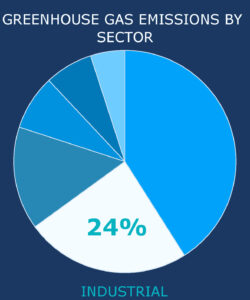
Engineered negative emissions technologies include biomass conversion (such as bioenergy with carbon capture and storage, or BECCS) and direct air capture with carbon capture and storage (DACCS). BECCS and DACCS remove past emissions from the atmosphere. Carbon capture from difficult-to-mitigate sectors like industrial facilities avoids new emissions from processes like cement manufacturing.